IMG Stageline DM-3400 Handleiding
IMG Stageline
Microfoon
DM-3400
Bekijk gratis de handleiding van IMG Stageline DM-3400 (4 pagina’s), behorend tot de categorie Microfoon. Deze gids werd als nuttig beoordeeld door 76 mensen en kreeg gemiddeld 3.8 sterren uit 38.5 reviews. Heb je een vraag over IMG Stageline DM-3400 of wil je andere gebruikers van dit product iets vragen? Stel een vraag
Pagina 1/4

ELECTRONICS FOR SPECIALISTS ELECTRONICS FOR SPECIALISTS ELECTRONICS FOR SPECIALISTS ELECTRONICS FOR SPECIALISTS
Dynamisches Mikrofon
Dynamic Microphone
DM-3400
Bestell-Nr. • Order No . 23.6340
BEDIENUNGSANLEITUNG
INSTRUCTION MANUAL
MODE D’EMPLOI
ISTRUZIONI PER L’USO
MANUAL DE INSTRUCCIONES
INSTRUKCJA OBSŁUGI

2
DeutschEnglish
Dynamisches Mikrofon
Diese Anleitung richtet sich an Benutzer
ohne besondere Fachkenntnisse. Bitte lesen
Sie die Anleitung vor dem Betrieb gründlich
durch und heben Sie sie für ein späteres
Nachlesen auf.
1 Einsatzmöglichkeiten
Das dynamische Mikrofon DM-3400 mit
Nierencharakteristik eignet sich optimal für
Gesangs- und Sprachanwendungen auf der
Bühne, im Theater, in der Diskothek etc.
Zum Lieferumfang gehören ein Mikrofonhal-
ter und ein 5 m langes Low-Noise-Anschluss-
kabel.
2 Wichtige Hinweise
für den Gebrauch
Das Mikrofon entspricht allen relevanten
Richt linien der EU und trägt deshalb das
-Zeichen.
•
Setzen Sie das Mikrofon nur im Innenbe-
reich ein und schützen Sie es vor Tropf-
und Spritzwasser, hoher Luftfeuchtigkeit
und Hitze (zu lässiger Einsatztemperatur-
bereich 0 – 40 °C).
Dynamic Microphone
These instructions are intended for users
without any specific technical knowledge.
Please read the instructions carefully prior to
operation and keep them for later reference.
1 Applications
The dynamic cardioid microphone DM-3400
is ideally suited for vocals and speech on
stage, in theatres, in discotheques, etc. It
is supplied with a microphone holder and a
5 m low-noise connection cable.
2 Important Notes
The microphone corresponds to all relevant
directives of the EU and is therefore marked
with .
•
The microphone is suitable for indoor use
only. Protect it against dripping water and
splash water, high air humidity and heat
(admissible ambient temperature range:
0 – 40 °C).
•
For cleaning only use a dry, soft cloth;
never use water or chemicals.
•
No guarantee claims for the microphone
and no liability for any resulting personal
•
Verwenden Sie zum Reinigen nur ein tro-
ckenes, weiches Tuch, auf keinen Fall Che-
mikalien oder Wasser.
•
Wird das Mikrofon zweckentfremdet,
falsch angeschlossen oder nicht fachge-
recht repariert, kann keine Haftung für
daraus resultierende Sach- oder Personen-
schäden und keine Garantie für das Mik-
rofon übernommen werden.
Soll das Mikrofon endgültig aus
dem Betrieb genommen werden,
übergeben Sie es zur umweltge-
rechten Entsorgung einem örtli-
chen Recyclingbetrieb.
3 Inbetriebnahme
1) Den Mikrofonhalter auf ein Mikrofonsta-
tiv mit 15,9-mm-Gewinde (5⁄8”) schrauben
und das Mikrofon in den Halter schieben.
2) Das Mikrofon über das Kabel mit dem
Mikro fon eingang eines Audiogerätes (z. B.
Mischpult, Aufnahmegerät, Verstärker)
verbinden. Das Mikrofon und das An-
schlusskabel sind symmetrisch ausgelegt.
3) Zum Einschalten des Mikrofons den Schal-
ter nach oben schieben.
damage or material damage will be ac-
cepted if the microphone is used for other
purposes than originally intended, if it is
not correctly connected, or if it is not re-
paired in an expert way.
If the microphone is to be put out
of operation definitively, take it to
a local recycling plant for a disposal
which is not harmful to the envi-
ronment.
3 Operation
1) Screw the microphone holder onto a
microphone stand with 15.9 mm (5⁄8”)
thread. Then place the microphone into
the holder.
2) Use the cable to connect the microphone
to the microphone input of an audio unit
(e. g. mixer, recorder, amplifier). The mi-
crophone and the connection cable are
balanced.
3) To switch on the microphone, slide the
switch upwards.
4) To prevent acoustic feedback, never po-
sition the microphone too close to the
4) Zur Vermeidung von Rückkopplungspfei-
fen darauf achten, dass das Mikrofon
nicht zu nah an den Lautsprecher gehal-
ten oder auf ihn gerichtet wird und die
Lautstärke nicht zu hoch eingestellt ist.
Wenn erforderlich, die Lautstärke für das
Mikrofon am Verstärker oder Mischpult
reduzieren.
4 Technische Daten
Wandlertyp: . . . . . . . dynamisch
Richtcharakteristik: . . Niere
Frequenzbereich: . . . 50 – 15 000 Hz
Max. Schalldruck: . . . 140 dB
Empfindlichkeit: . . . . 2,5 mV/ Pa bei 1 kHz
Impedanz: . . . . . . . . . 630 Ω
Gehäuse: . . . . . . . . . Metallguß
Anschluss: . . . . . . . . . XLR, symmetrisch
Kontaktbelegung: . . 1 = Schirm
2 = Signal +
3 = Signal −
Anschlusskabel: . . . Low-Noise-Kabel mit
XLR-Anschlüssen, 5 m
Abmessungen: . . . . . 45 mm × 180 mm⌀
Gewicht: . . . . . . . . . . 610 g
Änderungen vorbehalten.
speaker or towards the speaker and make
sure that the volume is not too high. If
necessary, reduce the volume for the mi-
crophone on the amplifier or mixer.
4 Specifications
Transducer type: . . . . dynamic
Polar pattern: . . . . . . cardioid
Frequency range: . . . 50 – 15 000 Hz
Max. SPL: . . . . . . . . . 140 dB
Sensitivity: . . . . . . . . . 2.5 mV/ Pa at 1 kHz
Impedance: . . . . . . . . 630 Ω
Body: . . . . . . . . . . . . cast metal
Connection: . . . . . . . XLR, balanced
Pin configuration: 1 = shield . .
2 = signal +
3 = signal −
Connection cable: . 5 m low-noise cable
with XLR connectors
Dimensions: . . . . . . . 45 mm × 180 mm⌀
Weight: . . . . . . . . . . 610 g
Subject to technical modification.
12
3
on
off
➀
Beschaltung
Circuit diagram
➁
Frequenzgang
Frequency response

3
FrançaisItaliano
Microfono dinamico
Queste istruzioni sono rivolte a utenti senza
conoscenze tecniche specifiche. Vi preghia-
mo di leggerle attentamente prima della
messa in funzione e di conservarle per un
uso futuro.
1 Possibilità d’impiego
Il microfono dinamico DM-3400 con caratte-
ristica a cardioide è adatto in modo ottimale
per applicazioni di canto e di lingua parlata
sul palcoscenico, a teatro, in discoteca ecc.
Sono in dotazione un porta microfono e un
cavo low noise di 5 m.
2 Avvertenze importanti per l’uso
Il microfono è conforme a tutte le direttive
rilevanti dell’UE e pertanto porta la sigla .
•
Usare il microfono solo all’interno e proteg-
gerlo dall’acqua gocciolante e dagli spruzzi
d’acqua, da alta umidità dell’aria e dal
calore (temperatura d’impiego ammessa
fra0 e 40 °C).
•
Per la pulizia usare solo un panno morbi-
do, asciutto; non impiegare in nessun caso
acqua o prodotti chimici.
Microphone dynamique
Cette notice s’adresse aux utilisateurs sans
connaissances techniques particulières.
Veuillez lire la notice avant le fonctionne-
ment et conservez-la pour pouvoir, si besoin,
vous y reporter ultérieurement.
1 Possibilités d’utilisation
Le microphone dynamique DM-3400, car-
dioïde, est adapté pour des applications
de chant et de discours sur scène, dans un
théâtre, une discothèque etc. Il est livré avec
un support micro et un cordon de branche-
ment Low Noise de 5 m.
2 Conseils importants d’utilisation
Le microphone répond à toutes les directives
nécessaires de l’Union européenne et porte
donc le symbole .
•
Le microphone n’est conçu que pour une
utilisation en intérieur. Protégez-le de tout
type de projections d’eau, des éclabous-
sures, d’une humidité élevée de l’air et de
la chaleur (plage de température de fonc-
tionnement autorisée : 0 – 40 °C).
•
Pour le nettoyage, utilisez uniquement un
chiffon sec et doux, en aucun cas de pro-
duits chimiques ou d’eau.
•
Nel caso d’uso improprio, di collegamen-
to sbagliato o di riparazione non a regola
d’arte del microfono, non si assume nessu-
na re sponsabilità per eventuali danni con-
sequenziali a persone o a cose e non si as-
sume nessuna garanzia per l’apparecchio.
Se si desidera eliminare il microfono
definitivamente, consegnarlo per lo
smaltimento ad un‘istituzione loca-
le per il riciclaggio.
3 Messa in funzione
1) Avvitare il porta microfono su uno stati-
vo per microfono con filettatura 15,9 mm
(5⁄8”) e inserire il microfono nel suo sup-
porto.
2) Collegare il microfono con l’ingresso di
un apparecchio audio (p. es. mixer, regi-
stratore, amplificatore) usando il cavo in
dotazione. Il microfono e il cavo di colle-
gamento sono con contatti bilanciati.
3) Per accendere il microfono spostare in alto
l’interruttore.
4) Per evitare il fischio del feedback fare
attenzione che il microfono non si trovi
•
Nous déclinons toute responsabilité en cas
de dommages matériels ou corporels ré-
sultants si le microphone est utilisé dans
un but autre que celui pour lequel il a été
conçu, s’il n’est pas correctement branché
ou s’il n’est pas réparé par une personne
habilitée; en outre, la garantie deviendrait
caduque.
Lorsque le micro est définitivement
retiré du marché, vous devez le dé-
poser dans une usine de recyclage
de proximité pour contribuer à son
élimination non polluante.
CARTONS ET EMBALLAGE
PAPIER À T RIER
3 Fonctionnement
1) Vissez le support micro sur un pied micro
doté d’un filetage 15,9 mm (5⁄8”) et placez
le microphone dans le support.
2) Reliez le microphone à l’entrée micro d’un
appareil audio (p. ex. table de mixage, en-
registreur, amplificateur) via le cordon de
branchement. Le microphone et le cordon
de branchement sont symétriques.
3) -Pour allumer le microphone, poussez l’in
terrupteur vers le haut.
troppo vicino all’altoparlante, che non
sia orientato verso l’altoparlante e che il
volume non sia troppo alto. Se necessa-
rio, sull’amplificatore o sul mixer ridurre il
volume per il microfono.
4 Dati tecnici
Tipo di trasduttore: dinamico . .
Caratteristica: . . . . . . cardioide
Gamma di frequenze: 50 – 15 000 Hz
Pressione
sonora max.: . . . . . . . 140 dB
Sensibilità: . . . . . . . . 2,5 mV/ Pa con 1 kHz
Impedenza: . . . . . . . . 630 Ω
Corpo: . . . . . . . . . . . metallo pressofuso
Contatti: . . . . . . . . . . XLR, bilanciati
Piedinatura: . . . . . . 1 = schermo
2 = segnale +
3 = segnale −
Cavo di
collegamento: . . . . cavo low noise di 5 m
con contatti XLR
Dimensioni: . . . . . . . . 45 mm × 180 mm⌀
Peso: . . . . . . . . . . . . . 610 g
Con riserva di modifiche tecniche.
4) Pour éviter tout effet de larsen, assu-
rez-vous que le microphone n’est pas tenu
trop près d’une enceinte, n’est pas dirigé
vers elle et que le volume n’est pas réglé
trop fort. Si besoin, diminuez le volume
pour le microphone sur l’amplificateur ou
la table de mixage.
4 Caractéristiques techniques
Type transducteur : . . .dynamique
Directivité : . . . . . . . . .cardioïde
Bande passante : . . . . .50 – 15 000 Hz
Pression sonore max. : 140 dB
Sensibilité : . . . . . . . . .2,5 mV/ Pa à 1 kHz
Impédance : . . . . . . . .630 Ω
Corps : . . . . . . . . . . . .fonte métallique
Branchement : . . . . . .XLR, symétrique
Configuration
contacts : . . . . . . . . .1 = blindage
2 = signal +
3 = signal −
Cordon
branchement : . . . . cordon Low Noise
5 m avec fiches XLR
Dimensions : . . . . . . . . 45 mm × 180 mm⌀
Poids : . . . . . . . . . . . . .610 g
Tout droit de modification réservé.
12
3
on
off
➀
Schéma electrique
Schema elettrico
➁
Réponse en fréquence
Risposta in frequenza
Product specificaties
| Merk: | IMG Stageline |
| Categorie: | Microfoon |
| Model: | DM-3400 |
Heb je hulp nodig?
Als je hulp nodig hebt met IMG Stageline DM-3400 stel dan hieronder een vraag en andere gebruikers zullen je antwoorden
Handleiding Microfoon IMG Stageline

21 Februari 2024

21 Februari 2024

21 Februari 2024

21 Februari 2024

20 Februari 2024

20 Februari 2024

20 Februari 2024

20 Februari 2024
Handleiding Microfoon
- ZaxSound
- Triton
- Manta
- Shure
- Line 6
- Chord
- Sytech
- Pixel
- Kurzweil
- MILAB
- MELONARE
- Blaupunkt
- Solid State Logic
- Blue
- White Shark
Nieuwste handleidingen voor Microfoon
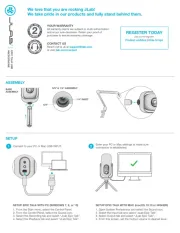
3 Augustus 2025
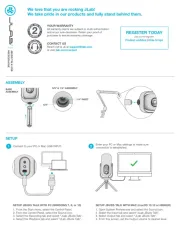
3 Augustus 2025
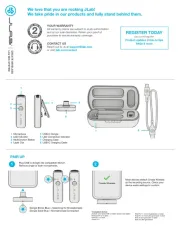
3 Augustus 2025
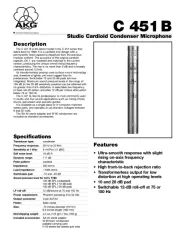
2 Augustus 2025
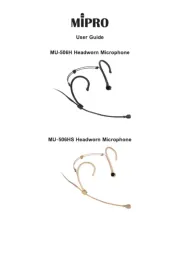
29 Juli 2025
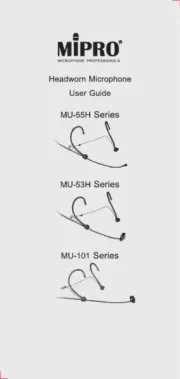
29 Juli 2025
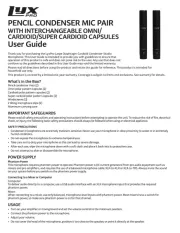
29 Juli 2025

29 Juli 2025
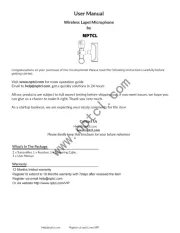
28 Juli 2025
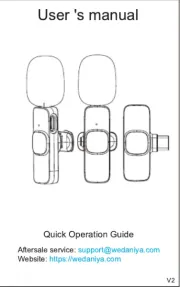
28 Juli 2025